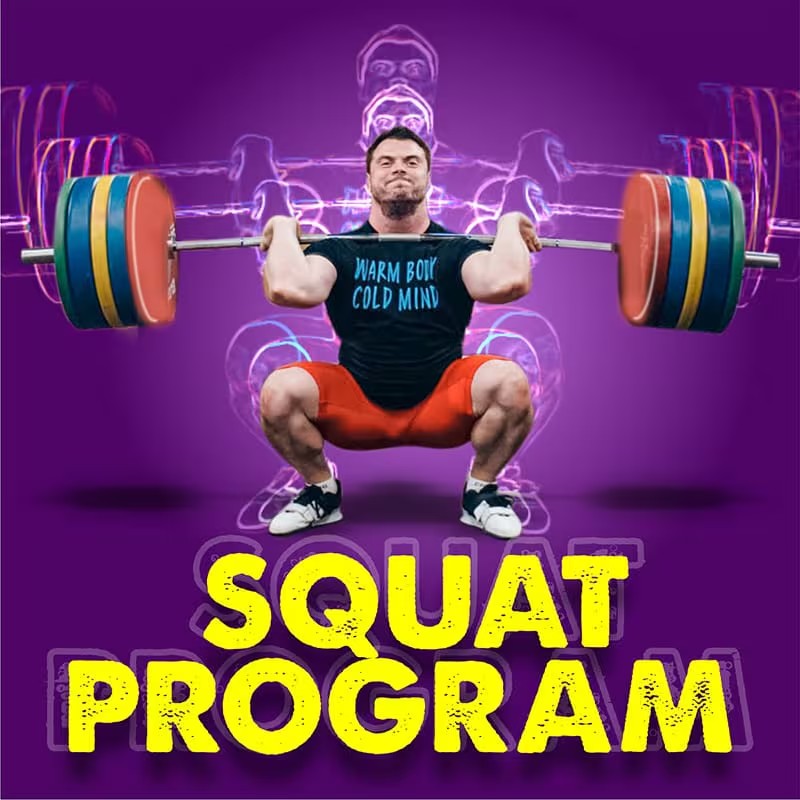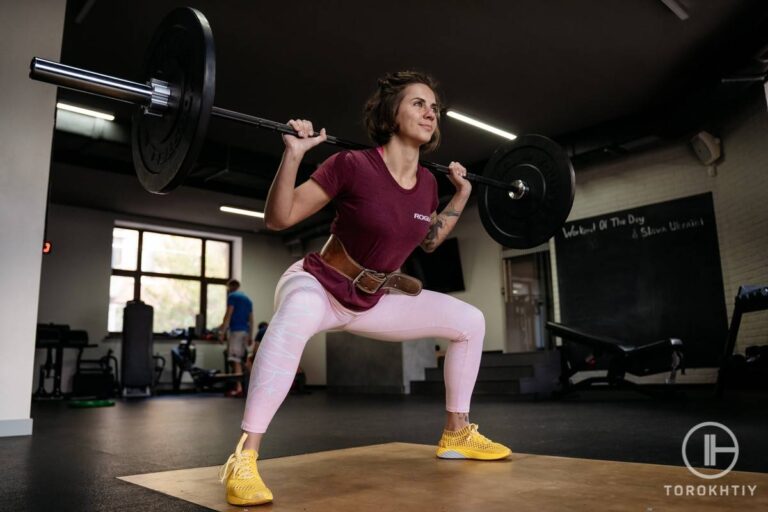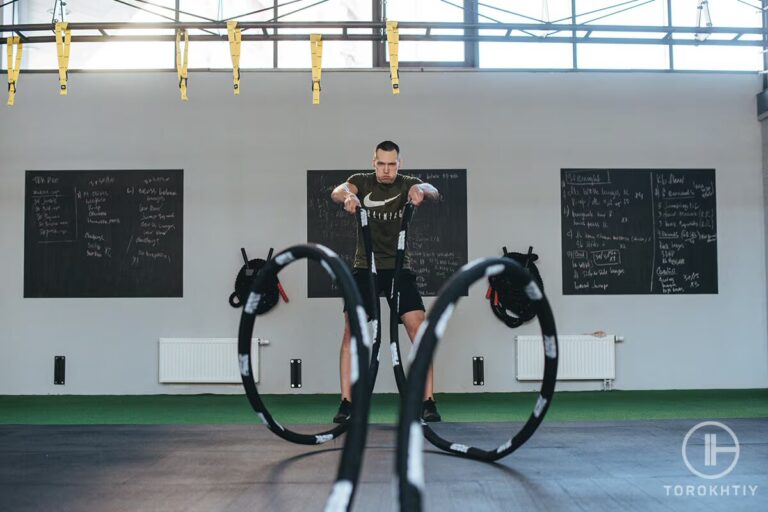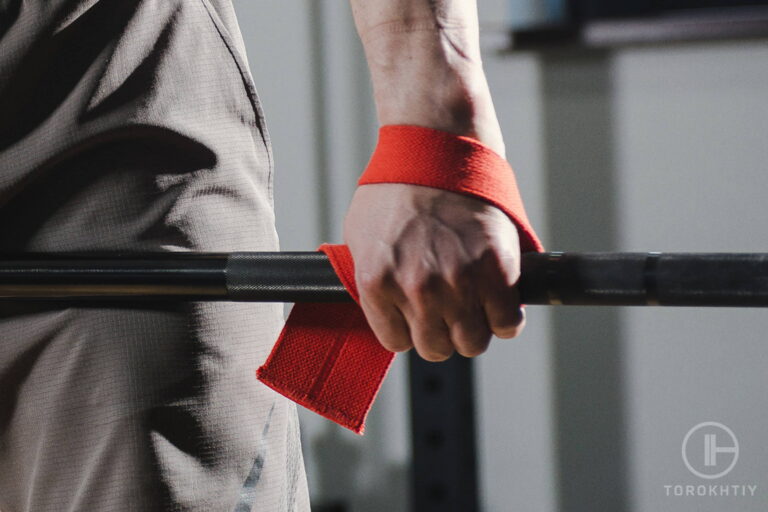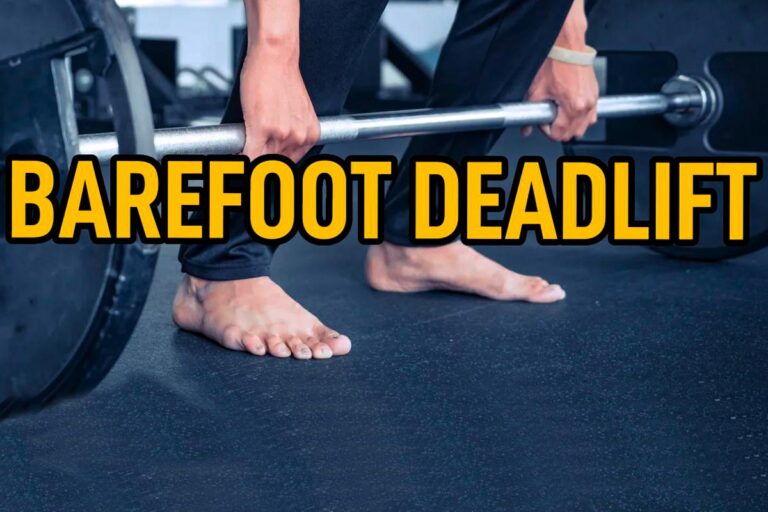How To Increase Squat Weight (Tips & Exercises from PhD)
The squat is one of the essential weightlifting exercises, and it’s a part of the training program for all kinds of athletes – from powerlifters and Olympic weightlifters to basketball and tennis players. That’s because it’s one of the most effective, if not the most effective, exercises for increasing lower body strength and endurance, as it works the glutes, hamstrings, quadriceps, calves, and core all at the same time.
With that said, it’s clear that everyone would want to increase the amount of weight they can lift when squatting, as it’s a great indicator of their strength, and it obviously translates into more power for all other kinds of movements.
So in this article, we’re going to discuss how to increase squat weight, following only proven and scientific advice that will make it easy and straightforward for you to implement in your training routine.
How to Increase Squat Weight? How to increase squat weight? It’s simple – have the correct form, go for progressive overload, eat enough protein, stretch, and make sure you give your muscles adequate recovery.
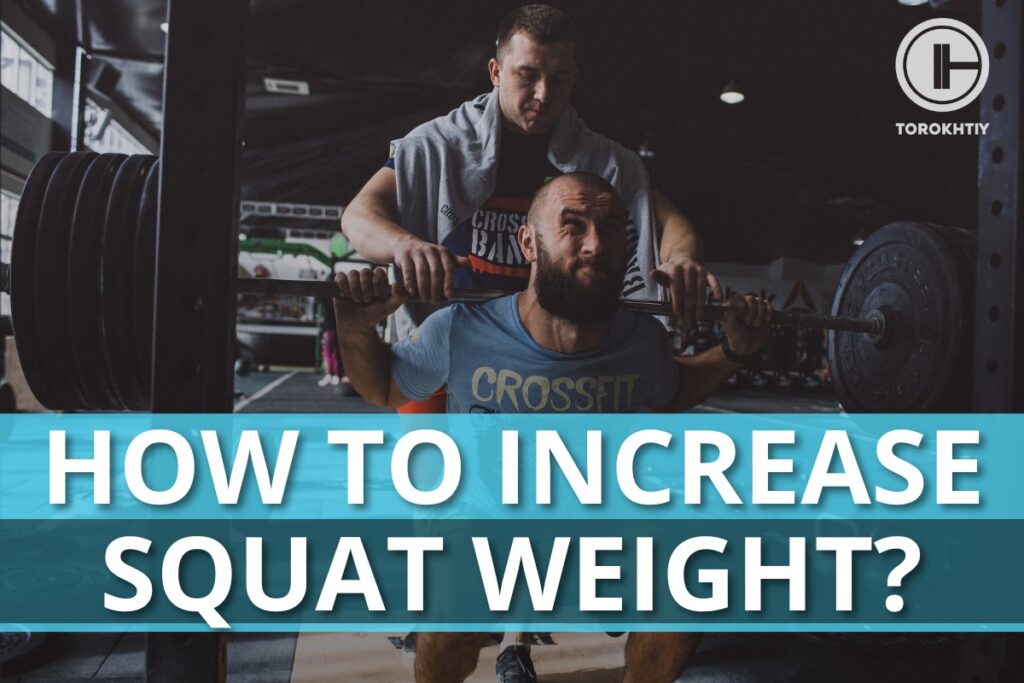
How to Increase Your Squat Weight Gradually
When it comes to progress in the gym after those initial “beginner gains’, you will find it harder to get stronger, and it will take you longer. Essentially, once you get to a certain weight with squatting, you might feel like you’re hitting a plateau and you’re finding it more and more difficult to squat more, even if you put just five more kilograms on the bar.
The first thing we’re going to say is that it’s completely normal and it happens to absolutely anyone working to squat heavy and improve gym performance. The second thing we’re going to share is how to move away from that plateau and learn how to improve squat over time in an efficient and proven manner, so let’s get started.
1. Improve Your Technique
Most lifters are certain that they know and are doing the correct squat technique. However, upon observation, many are able to find flows with their form – either they’re not going as low as they can, or they’re moving slightly more on their toes than is required; whatever it is, the first thing you should do if you’re looking to squat more weight is to take a good look at your technique.
To do that, take a few videos of yourself squatting different weights – both light and heavy and look to see if you make any changes or adjustments. Typically, as the weight gets heavier, the form starts to become more compromised, which makes the movement less effective and prevents you from achieving better results.
Along with that, it’s a good idea to consult with a coach you trust and to ask them to take a look at your technique – that way, you will find which areas you need to improve, or you will be certain that your form is completely correct.
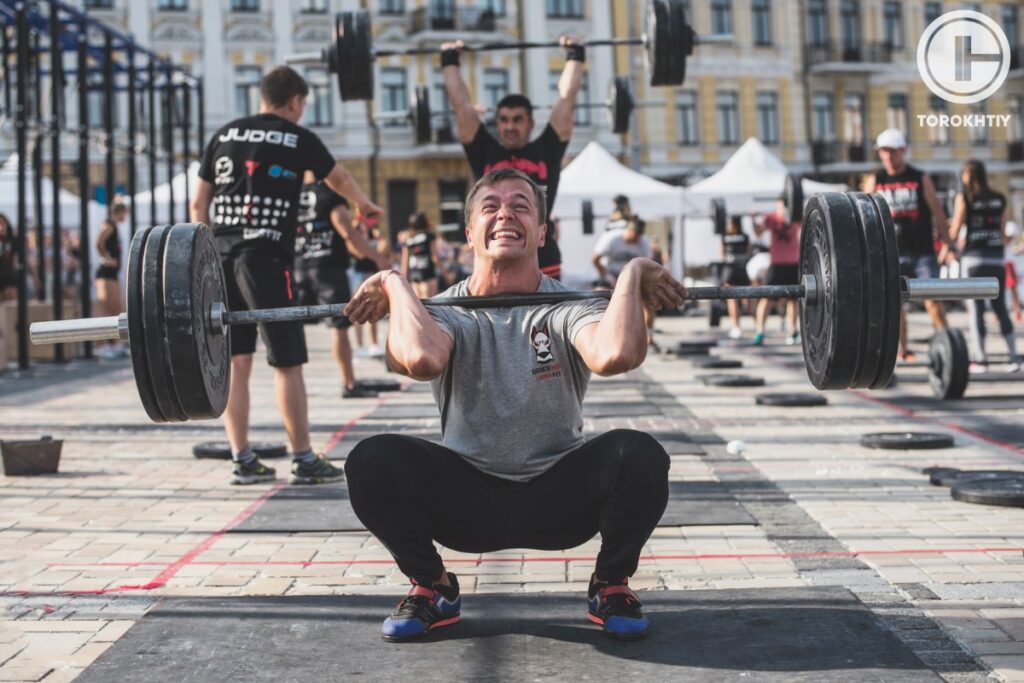
2. Progressive Overload
Most training programs talk about progressive overload, as it’s one of the most standardized concepts in the world of weightlifting. In fact, it’s highly likely you’re already following that approach without even putting a lot of thought into it. The idea of progressive overload is to gradually increase the weight, reps, or frequency with which you’re lifting in your training regime.
A good example would be to say you squat twice per week. On the first day, you do 5 sets of 6 reps with a weight that feels manageable yet challenging. On the second day for squatting, you do 10 reps but with a much lighter weight. The week after, you follow the same routine, but you put a bit more weight on that first squatting day but maintain the same for the second day.
Over the course of the next month, as you follow this routine, you should get a stronger squat, and by then, it will be time for the so-called “de-load” week, where you do less volume with less intensity to give the body a chance to recover.
3. Proper Training Volume
Training as much as you can, as hard as you can, sounds like a great theory in general, but in reality, it’s almost never the best approach, especially if you want to remain injury-free and progress gradually.
When it comes to learning how to squat heavier, the answer is to have a balanced training volume that includes many different lower body exercises. Ideally, you want to have one day in the week focused on gaining strength, where you do lower reps but with more weight, and another day, where you do more volume but with weight that doesn’t feel as challenging.
Along with that, you want to dedicate time in the week when your legs are resting, and you have a chance to regain the power to train again.
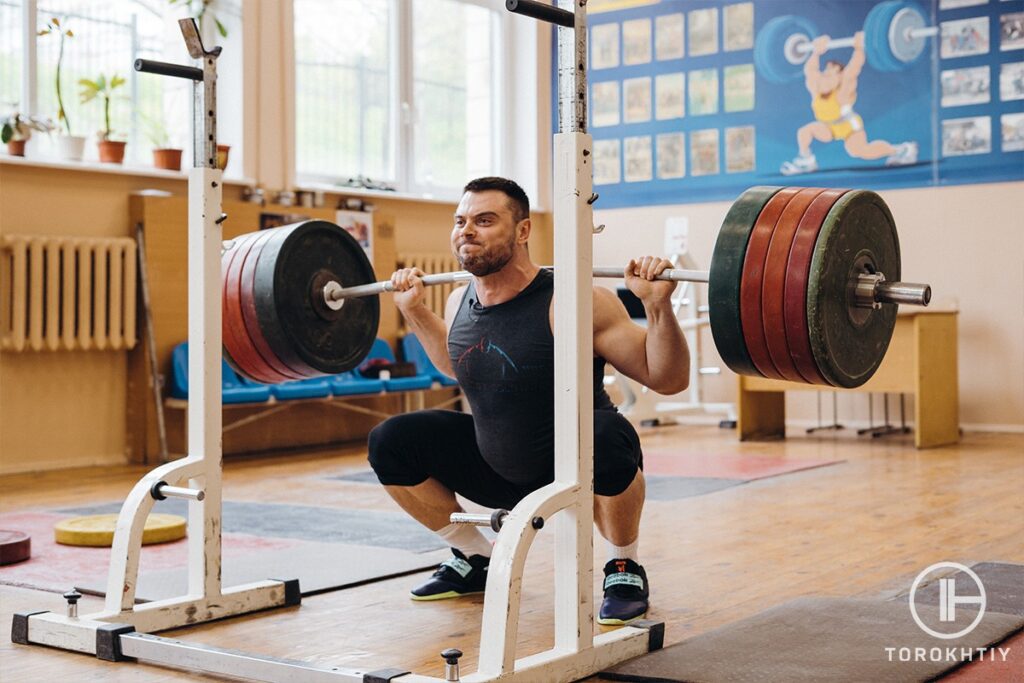
4. Adequate Recovery
Most lifters love to talk about recovery, but many forget to prioritize it, so they’re unable to see the results they want to achieve. When it comes to how to increase your squat, along with proper training, you also need a good sleeping schedule and a nutrition plan that enables the body to provide the muscles with the necessary nutrients to regenerate.
In our case, that means sleeping at least 7 hours every night and getting sufficient protein intake depending on your dietary needs. Without proper recovery time and nutrition, your muscles cannot grow, and your strength won’t increase over time, so remember to have the same kind of discipline toward your recovery as you have when it comes to going to the gym and lifting heavy weights.
5. Finding The Limiting Factor
If, on your journey to get a stronger squat, you’ve already hit a plateau, then you need to identify why that happened. Typically, if you’re not able to improve the weight you’re lifting for more than two months, then that’s an indication that you’re doing something wrong (an increase of even 5 kg is still improvement; here we’re discussing cases where the weight isn’t going up at all).
In most cases, the problem is either with the way you’re training – you’re not hitting enough volume, you’re not doing progressive overload, or you’re doing the exercise with bad form and technique. Alternatively, the problem could be with your recovery – if your nutrition is not on point and you’re not able to sleep and recover properly, that will ultimately lead to a lack of improvement in your gym results.
What you should do at this point is evaluate the reasons why you might not be progressing and work on improving your performance in those areas.
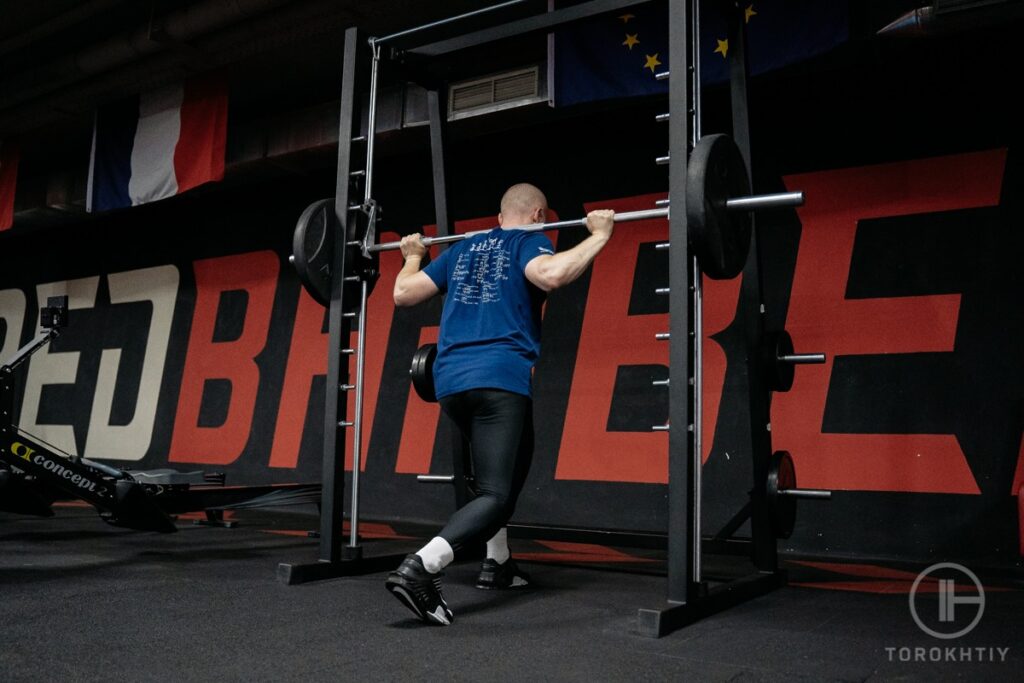
8 exercises to improve your squat
When it comes to improving your squat and lifting heavier, you have to do more than just squat twice per week. In fact, there’s a whole bunch of exercises to incorporate into your training program that will increase your overall strength and allow you to build more muscle, which will inevitably lead to a better performance when you do squats.
We will separate the exercises you can do into two categories, leg exercises and posterior chain exercises so that it becomes clearer which areas of the body they’re meant to target.
1. Leg Exercises
It’s clear that the main leg exercise you should be doing is the squat. It’s proven to be the best at building strength and muscle in the lower body, and so it’s a must-do in your routine. However, you should be adding more variety to your workouts by adding both other types of movements and also different squat variations that target your muscles in a slightly different way.
Some of the leg exercises you should be doing include:
- Leg press variations: a great way to train the lower body without too much stress on the joints and tendons.
- Split squats: a terrific way to work on any strength imbalances you may be dealing with
- Walking lunges: a rather difficult exercise that challenges both the quads and the hamstrings
- Machine exercises targeting different lower body muscle groups
The idea here is to do various movements that challenge your body in different ways. That way, your muscles can never get too comfortable with the movement to the point where progress stops as you’re constantly asking them to move in a slightly different manner. Along with that, you should incorporate all the squat variations in your training regime, including:
- Sumo squats
- Single leg squats
- Front squats
- Goblet squats & more
You will find that they not only keep your workouts exciting and challenging but also help you improve more efficiently over time.
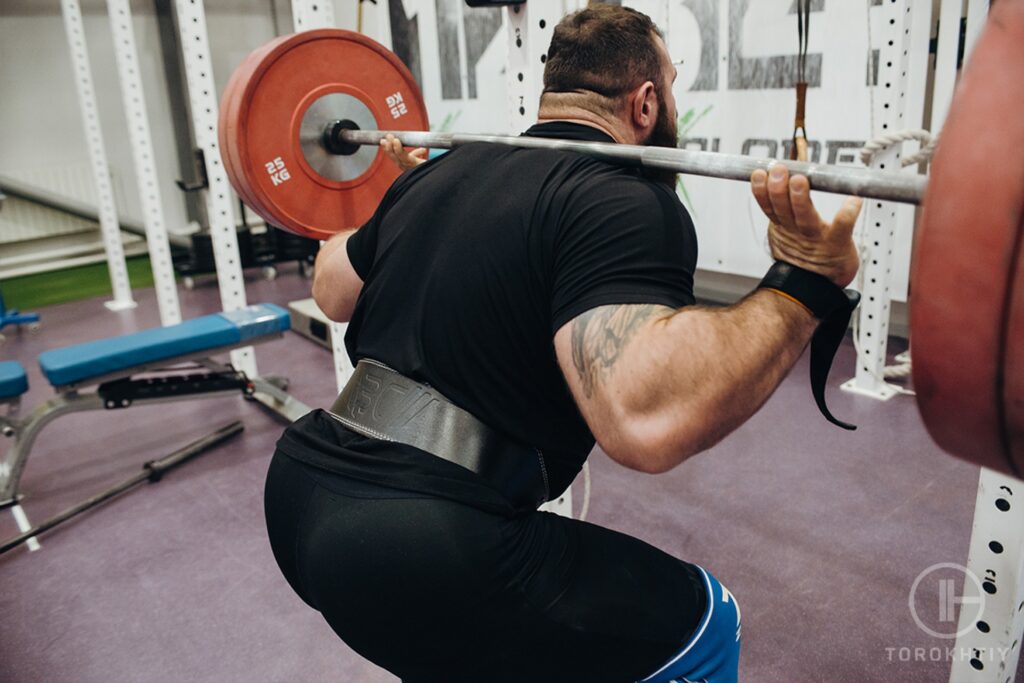
2. Posterior Chain Exercises
Along with training the legs, you should also prioritize training the posterior chain when it comes to increasing your squat weight. When we talk about the posterior chain, you can just imagine all the muscles in the back of your body, including the glutes, hamstrings, and lower and upper back, and all of them can be trained with various exercises, including:
- Deadlift
- Good morning
- Pull-ups
- Bent-over-row
- Glute bridges
- Hamstring curls & many more
The crucial thing here is to make sure you include deadlifts in your training regime and also to ensure you’re doing all the different variations – from the classic deadlift to the RDL, the sumo deadlift, and even the single-leg Romanian deadlift. That way, you will be certain you’re avoiding getting accustomed to the exercise and that your muscles are always getting stimulated in a variety of ways that can help them grow stronger and help you increase your squat weight.
🔻12 Week Squat Program by Oleksiy Torokhtiy
Do you want to double your squat strength? In just 12 weeks, you’ll be able to boost your squat results.
This program transforms any ordinary squat into a powerful athletic movement.
What’s included:
- 12 weeks of squat programming;
- Effective combination of sets, reps, and weights;
- Fully designed and coached by Oleksiy Torokhtiy;
- Over 60+ movements, banded work, and weight training;
- Accessory work for core, joint stability and injury prevention;
- Max out on back squat and front squat at the end.
Start now and boost your squat results!
3. Core Exercises
The third and final muscle group that plays a crucial role in the squat are your core muscles. They have to be engaged for the entire duration of the workout, and they’re what gives you support and stability as you move through the entire range of motion. That’s why you have to target them in your training regime as well, and here, we also have quite a few movements to choose from:
- Planks
- Ab rollouts
- Sit-ups
- V-ups
- Russian twists
Here, the most important movement that is a must-do is the plank, as it teaches you to keep the core locked in and controlled, which is essentially what you also need to do when squatting heavy. Of course, you should aim for progressive overload here as well – if you start with holding the plank for only 30 seconds, try to increase the time by 10 seconds each week. After you hit the two-minute mark, you can start placing weight on top of your back as a way to increase the difficulty.
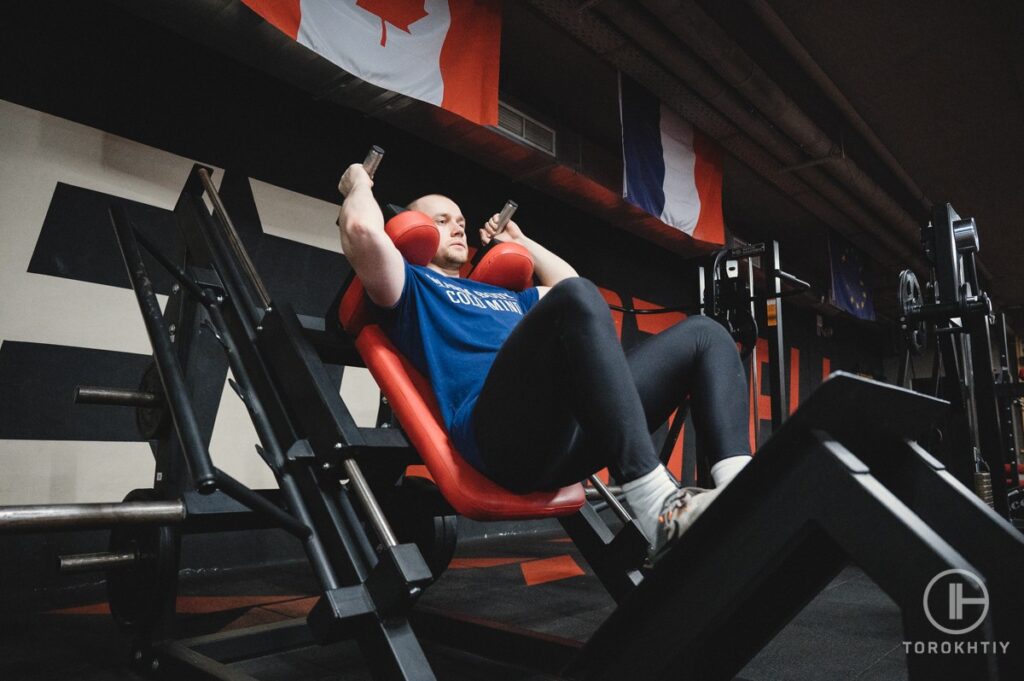
Squat Program to Incorporate in Your Training Routine to Increase Squat Weight
As always, when you’re attempting to get better at a particular exercise, you have to approach it methodically and with a clear idea as to how to go about your training sessions. The easiest way to do that is by following a pre-made routine developed by experts that can help you achieve your goals in an effective and efficient manner.
Unfortunately, online, you will often find programs that are either too simplified or are made for people who are already training professionally, and for most regular gym-goers and athletes, that type of “one size fits all” approach isn’t really working or helping achieve the desired results.
That’s why we’re going to show you a different approach with two programs that aim to help you progress with increased volume over time or with increased intensity, and you can choose based on what fits into your personal workout schedule better. Keep in mind that both of these plans are designed for advanced athletes – people who have already been training for a while and want to make better and more efficient progress.
FAQ
How Do I Get My Squat Weight Up?
If you want to increase your squat weight, you have to train the leg muscles frequently, eat an adequate amount of protein for your body and training style, and also give your body enough time to rest and recover between sessions.
There’s no magic way to improve your squat number; the only thing you can do is aim for progressive overload and patiently train as efficiently as you can – the results will come, even if it’s at a slower pace.
Why Is It So Hard to Increase Squat Weight?
Typically, there are three main reasons why your squat isn’t progressing – incorrect form, lack of progressive overload and lack of proper recovery.
To understand what’s causing your personal plateau, it’s a good idea to reevaluate your technique to see if there’s anything that could be improved, and if that doesn’t turn out to be the issue, you can start going through all the other reasons until you find the culprit for your inability to increase squat weight.
How Fast Can I Grow My Squat?
After the initial “beginner gains” you will typically experience in the first months, you might start to plateau or feel like you’re not progressing as quickly.
When that moment comes, you should start assessing your technique, improving your workout schedule, and ensuring that you’re recovering well – at the same time, you should aim for progressive overload with every training session, and if all of that falls into place, you should be able to increase the weight by around 5 lbs per week.
Conclusion
The squat remains one of the most fundamental and essential exercises that are part of any workout program, no matter if you’re just a regular gym-goer or an athlete aiming to get results at international competitions.
With that said, for many people, increasing the amount of weight they can squat seems like an impossibly slow and difficult task, mainly due to the fact that this exercise is harder to perform and recover from than most.
With that said, in this short piece, we’ve provided you with a proven, science-based approach to improving your squat gains over time, and if you follow just these simple pillars, you will see results in no time. As always, if you have any tips and tricks to share or you just want to give us your overall feedback on the article, we will be waiting to read your comments.
Referenses:
- (PDF) optimizing squat technique – researchgate. (n.d.-a). https://www.researchgate.net/publication/232238951_Optimizing_Squat_Technique
- Peterson, M. D., Pistilli, E., Haff, G. G., Hoffman, E. P., & Gordon, P. M. (2011, June). Progression of volume load and muscular adaptation during resistance exercise. European journal of applied physiology. https://www.ncbi.nlm.nih.gov/pmc/articles/PMC4215195/
- Lorenzetti, Silvio, et al. “How to Squat? Effects of Various Stance Widths, Foot Placement Angles and Level of Experience on Knee, Hip and Trunk Motion and Loading.” BMC Sports Science, Medicine and Rehabilitation, vol. 10, no. 1, 17 July 2018, bmcsportsscimedrehabil.biomedcentral.com/articles/10.1186/s13102-018-0103-7, https://doi.org/10.1186/s13102-018-0103-7.
- Tataryn, Nicholas, et al. “Posterior-Chain Resistance Training Compared to General Exercise and Walking Programmes for the Treatment of Chronic Low Back Pain in the General Population: A Systematic Review and Meta-Analysis.” Sports Medicine – Open, vol. 7, no. 1, 8 Mar. 2021, https://doi.org/10.1186/s40798-021-00306-w.
- van den Tillaar, Roland, and Atle Hole Saeterbakken. “Comparison of Core Muscle Activation between a Prone Bridge and 6-RM Back Squats.” Journal of Human Kinetics, vol. 62, no. 1, 13 June 2018, pp. 43–53, https://doi.org/10.1515/hukin-2017-0176.
Why Trust Us?
With over 20 years in Olympic Weightlifting, our team does its best to provide the audience with ultimate support and meet the needs and requirements of advanced athletes and professional lifters, as well as people who strive to open new opportunities and develop their physical capabilities with us.
By trusting the recommendations of our certified experts in coaching, nutrition, dietology, and sports training programming, as well as scientific consultants, and physiotherapists, we provide you with thorough, well-considered, and scientifically proven content. All the information given in the articles concerning workout programming, separate exercises, and athletic performance, in general, is based on verified data. We ensure that you can rely on our professionals’ pieces of advice and recommendations that can be treated as personalized ones which will benefit you and fully meet your needs.
The product testing process is described in more detail here
Author: Sergii Putsov
Head of Sport Science, PhD
Best Results: Snatch – 165 kg,
C&J – 200 kg
Sergii Putsov, Ph.D., is a former professional weightlifter and National team member, achieving multiple medals in the 94 kg weight category at national competitions. With a Master’s degree in “Olympic & Professional Sport Training” and a Sport Science Ph.D. from the International Olympic Academy, Greece, Sergii now leads as the Head of Sport Science. He specializes in designing training programs, writing insightful blog articles, providing live commentary at international weightlifting events, and conducting educational seminars worldwide alongside Olympic weightlifting expert Oleksiy Torokhtiy.

